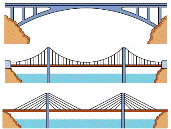Civil and Environmental Engineering
Document Type
Article
Date of this Version
7-14-2022
Citation
Zhong, B.; Zhu, J. Applications of Stretching Technique and Time Window Effects on Ultrasonic Velocity Monitoring in Concrete. Appl. Sci. 2022, 12, 7130. https://doi.org/10.3390/app12147130
Abstract
Coda wave interferometry (CWI) has been used to measure the relative wave-velocity change (dV/V) caused by small changes in materials. This study uses the stretching processing technique which has been used for CWI analysis to investigate velocity changes of direct longitudinal (P) wave, direct shear (S) wave, and coda wave in concrete by choosing different time windows of ultrasonic signals. It is found that the obtained wave-velocity change depends on the time window position, because the relative contribution of P wave and S wave is different in each signal window. This paper presents three experimental scenarios of velocity change in concrete: early-age hydration, temperature change, and uniaxial loading. In early-age concrete, the S wave has a larger relative velocity change than the P wave, which is consistent with the microstructure development due to the hydration process. Temperature change causes a larger dV/V on the P wave than on the S wave, and the difference between P and S wave-velocity changes may be used to determine nonlinear elastic constants of materials. In the uniaxial loading experiment, analysis of the direct P wave can distinguish the acoustoelastic effects in the stress direction and the non-stress direction, which may potentially be used for stress evaluation in prestressed structures. However, the coda wave does not show this directional property to stress due to multiple scattering in the medium.


Comments
© 2022 by the authors. Licensee MDPI, Basel, Switzerland. This article is an open access article distributed under the terms and conditions of the Creative Commons Attribution (CC BY) license